This time last year I was in the UK…and what a wonderful time of the year it is for gardens. It’s that perfect point where growth is full and generous, yet still fresh and new; foliage unblemished, tall and strong with a mix of perfectly formed flowers and buds full of anticipation.
According to The Royal Parks, it’s also the best month of the year to visit the gardens of Regent’s Park.
Covering 197 hectares of central London, Regent’s Park has two key gardens: Avenue Gardens, designed by Nesfield in 1861 and Queen Mary’s Gardens, named after King George V’s wife, which opened in 1932. The park itself was named in 1811 after the Prince Regent, later King George IV, who planned a summer palace for the site, although this never did eventuate.
Everything tells me these gardens are not really my types of garden. Very traditional, Victorian layouts dominated by bedding plants and massed roses. All a bit contrived for my liking and, oh, so out of date. So I was pretty surprised to find myself quite taken by them.
The Avenue Gardens, designed to lead up to the future summer palace, are a series of symmetrical beds, planted out primarily with low, seasonal, bedding specimens. I usually find bedding very dull: a single glance and you’ve seen it all and it’s just too static and false for my liking; too far removed from nature.
But somehow it really did work. I walked up and down and found that I had some kind of connection with these static, false, bedding displays. And I realised that it was history that made them work. In ‘The Regent’s Park’, these gardens, designed in the 1860s, were completely fitting to their time and seeing them in the 2010s took me back to that time. It was great to have a connection with history, to think that something similar was here 150 years ago and whilst I appreciated the updating that had been carried out, there was just enough of the old to let your imagination take hold.
These gardens had a sense of place. They just looked ‘right’. And I realised that I didn’t dislike bedding displays per se, I just, unfortunately, usually saw them out of place. Planted on a roundabout, Victorian era bedding displays will never fit with their place or with their history.
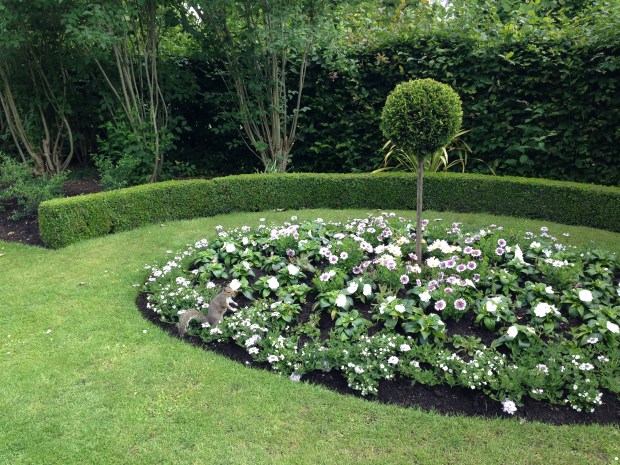
So many squirrels in Regent’s Park. They were digging everywhere, but I still thought they were sweet!
The longer I think about garden design, the more I realise that a sense of place, or ‘fit’, is one of the most important factors of all. The best gardens cause an emotional reaction in us; a connection between garden and visitor. And more often than not, I think it is a sense of place than promotes that connection.
Of course a sense of place doesn’t have to be formed over a long period of time. It’s why, after five years in Australia, I’d probably say my favourite plant was Anigozanthos, or Kangaroo Paws. They just look ‘right’ here. Whilst they are only native to Western Australia and most cultivars are very newly developed, they loudly shout ‘Australia’ and fit well in almost any garden style here. In Sydney, I particularly love seeing them send their colourful, shapely flower stems up against sandstone walls; the combination has an incredible sense of place.
Back in London, as I moved on to Queen Mary’s Gardens, primarily a rose garden with over 12,000 roses all of types, the strong sense of place continued. The elaborate, gilded, Jubilee Gates, marking the silver jubilee of George V in 1935, lead through to quite spectacular displays. They reminded me why I discourage people from having roses in their Sydney gardens: there is just no comparison between a healthy, happy rose and a lanky, bare rose, stressed by humidity.
I was delighted to see some informal areas in Queen Mary’s Gardens, much more reflective of nature and with more of a sense of spontaneity. The diversity and seemingly random placement of plants create a scene of pure beauty to me; nature tweaked to maximise impact in a small space and eliminate the ‘rough edges’, without a feeling of overwhelming human control. Natural materials, such as timber and rope, complement this sense of nature.
I realised that as much as I am drawn towards diverse and naturalistic types of gardens, there really is a place for each and every garden style. Our challenge, is to find the perfect fit for our own piece of this Earth; a fit with ourselves, a fit with the architecture of our home, a fit with the surrounding flora and architecture. We can build in a sense of history, a sense of the wider area, a sense of our quirks and loves; the further and more broadly we look, the strong the sense of place can be. Once we find it, everyone who steps foot in our garden can feel that emotion and connection and we know we have effectively created our little piece of paradise.
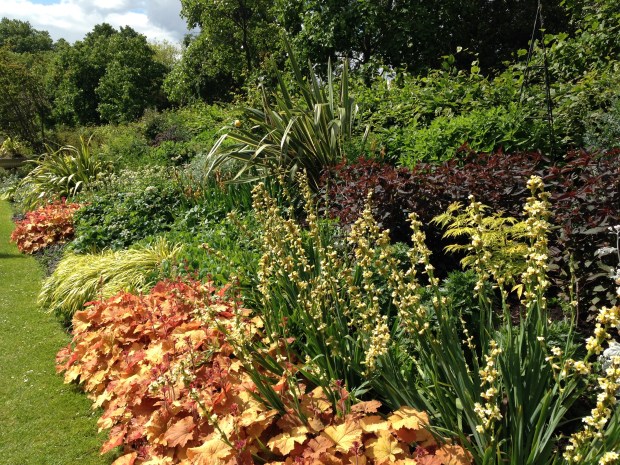
Bright Heuchera in Regent’s Park: a little ‘blocky’ for my liking, but with less regular swathes and some complementary orange flowers, it could be gorgeous
And bedding displays? I’m very glad they are for me after all, given the right setting. How fun it is to learn, discover, open your mind and prove yourself wrong!
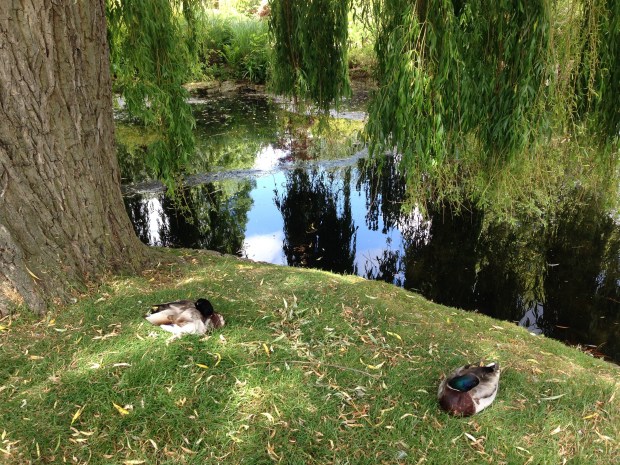
Although mallard ducks are very widely distributed across the world, I think of them as being very English, somehow; here beneath the willow tree
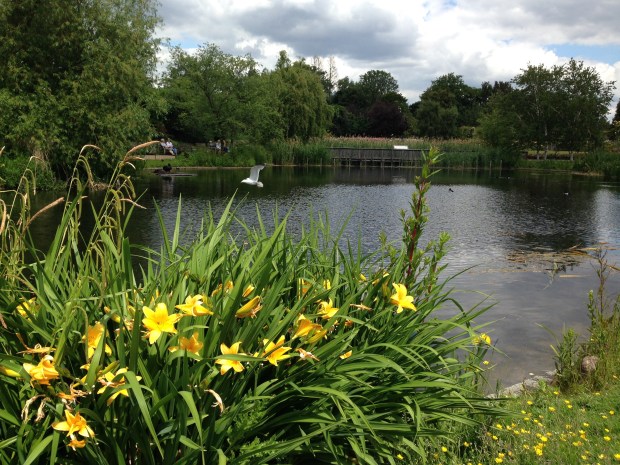

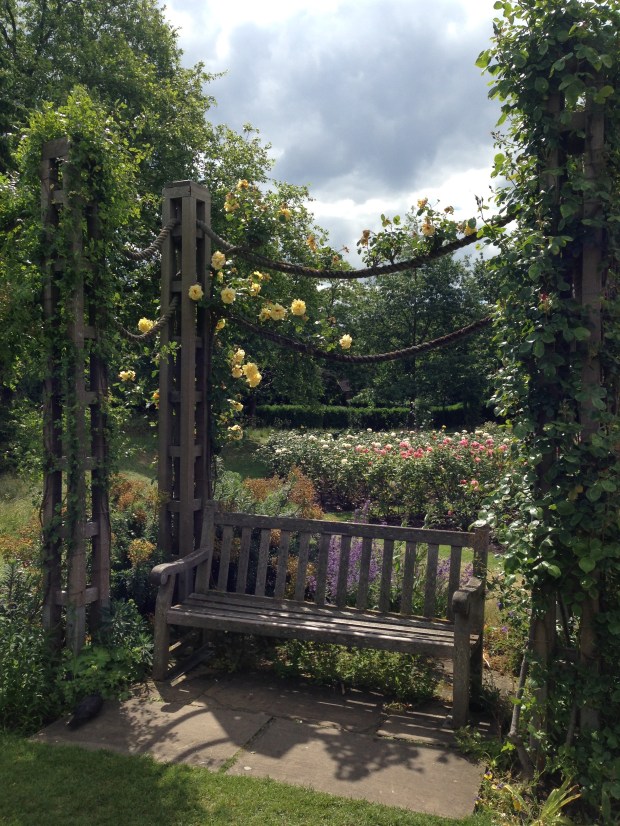


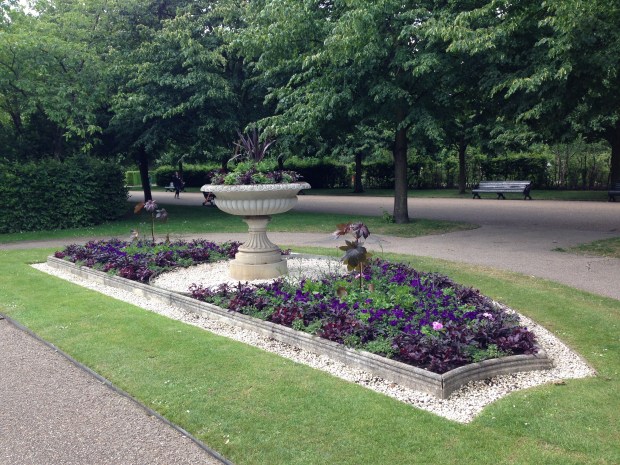


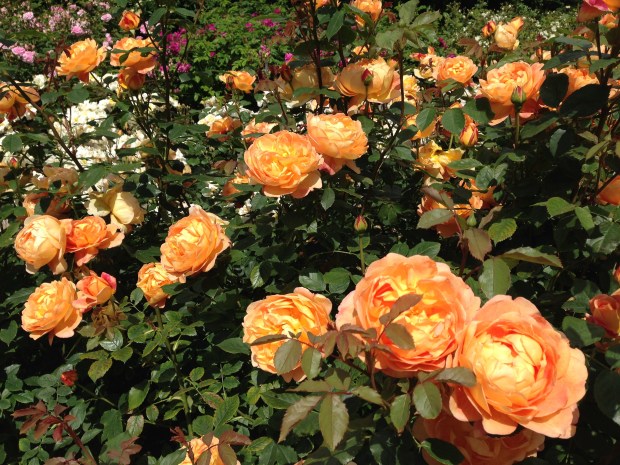

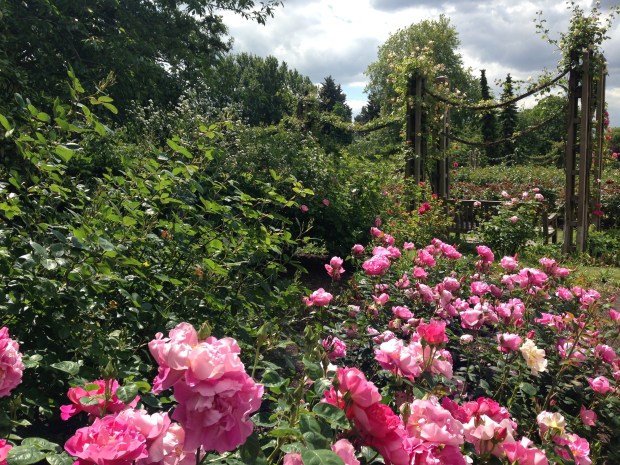
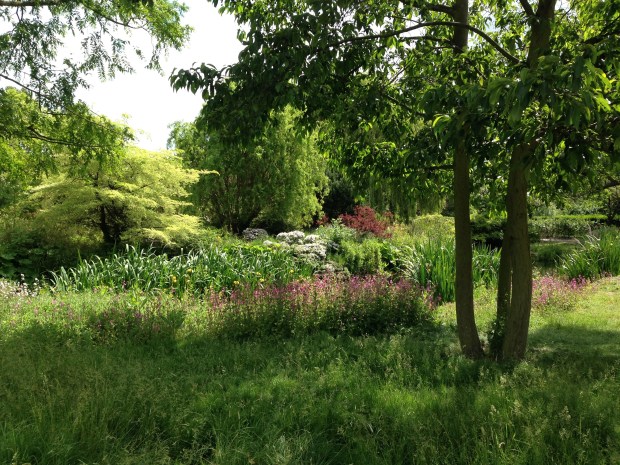





Janna you make a good point about context and historical accuracy. But it is so good to see a naturalistic side creeping in to the Regents Park planting as well. In a garden that size there is room for both.
Yes, if only my garden were that size… Actually, perhaps not, can you imagine the stress?!
I enjoyed very much your comments in this post especially with regard to a sense of place. Back in 1972 an Australian academic, George Sneddon, wrote Sense of Place a response to an environment, about my patch in the world. It had a big impact on me and I’ve been trying ever since to achieve the feeling about which you speak. Sadly though the contextual concept in gardening escapes so many. Thanks Janna
Hi Suzanne. I really must see if I can get hold of that book. I have been thinking for a while that I might even write my thesis (for my Master of Horticulture) on ‘Sense of Place’. I’m very interested to hear that it had a big impact on you; perhaps I can interview you when the times comes? I really do think it’s one of the key things that makes a garden, even to non-gardener types. I agree many don’t think about the contextual concept but I think instinctively almost all appreciate it at a subconscious level.
Janna, I would be very happy to be interviewed if it is at all helpful to you. Senseof place would be a great topic for a thesis. I do have a copy of Seddon’s book which you are welcome to borrow if you wish.
I could argue with you, and perhaps will one day, re your comment “almost all appreciate…”; certainly for Perth WA!
Thanks, Suzanne, I’d love to interview you. I’d also LOVE to borrow your book when you are next over; it doesn’t seem to be in any libraries I have tried. When I said “almost all appreciate…” I had in mind that people inherently know that really world class ‘sense of place’ gardens are good, without necessarily thinking why. However, you make a very good point, (which I think is) that few appreciate it enough to seek a strong sense of place in their own garden. I guess a problem is that there are so very few really excellent examples of it to inspire others. Judging by our conversation this really is an interesting thesis topic!
I think few people today would choose bedding displays for their own gardens but they do look right in an historic context. Recently I visited a late Victorian/early Edwardian garden outside Toronto where the bedding plants were just being put in place and talked to the designer. She uses only varieties that were available at the time the house was built, to reinforce that sense of historic ‘fit.’
Can bedding displays be modernized? Perhaps, if they are used ironically. Plants that need dry conditions could spell out something about rainy weather, for example, or be planted in the shape of a lightning bolt flashing through dark clouds. The garden would have to be a certain kind of place — edgy rather than romantic, and definitely not traditional. It might be fun to try!
These are interesting ideas, Pat. Edgy gardens do make you think and I’ll very much enjoy seeing any modernised bedding displays you try out. On balance, I think my preference is for gardens that instantly raise endorphin levels; the thinking part coming later when you try to work out why that happened, thus developing principles to replicate in new ways. There is nothing I love more than being swept away by a garden as I enter it. I’m a big fan of ‘effortless’ gardens…those that in reality involve huge effort, but appear as though they just happened.
Interesting Janna – I had the same feeling at the Ballarat Botanical Gardens, where my appreciation of the gardens, including the bedding displays, surprised me – as they are not to my taste. Perhaps it too was because of historical context. Naturalistic planting is I think far more difficult to achieve and hence at times the ‘blocky planting’ you refer to results. I am a victim of that, I think, in part of my garden. There is a thin line though between stylised planting and blocky – what do you think (I could be making excuses!).
I absolutely agree on that thin line, Adriana. For me there were two things that would have improved the blocky Heuchera. One, is that they need to be planted in more natural shapes. Either an irregular swathe that looks as though it self-seeded into the gaps or a roughly rounded shape that could pass as a single plant (despite the fact that it might contain 9 plants to create a ‘stylised’ rather than ‘fussy’, cottagey look). Hard to do against a straight edge, but possible if you let it spill over in places so that it is not so rectangular. Secondly, whilst contrast is good, the Heuchera here need more harmony. They are so different to all the other foliage colours that they stand out too far. Planted with other similar colours (be that flowers, foliage or berries with orange tints) the Heuchera would feel more integrated into the whole bed. I think that’s the main trick – not letting any single plant stand out on its own too much. Always a fine balance between contrast and harmony!
Great post!
You might be interested in some of Christopher Lloyd’s take on bedding planting – he championed that more informal style and talked about perennials as bedding plants: much less stuffy, but it was labour-intensive none-the-less with so much successional planting!
Although, as they say, everything old is new again and to me bedding planting never quite went out of style…it evolved into low growing shrubs (think Kurume azaleas and impatiens or carpet roses and lavenders) then swathes of low growing planting and foliage juxtapositions that we have today. It certainly gets you thinking though!
Christopher Lloyd did some amazing stuff, didn’t he? His garden is just so cheerful; I love it. He really did bring new thinking to gardening and luckily for us, Fergus Garrett is continuing that inspiration at Great Dixter. I can’t be doing with quite that intensity of successional planting myself, but it’s wonderful to see the results of others. As you say, taking old ideas and adapting them is exactly what makes design interesting and keeps it fresh. I’m all for new ideas!